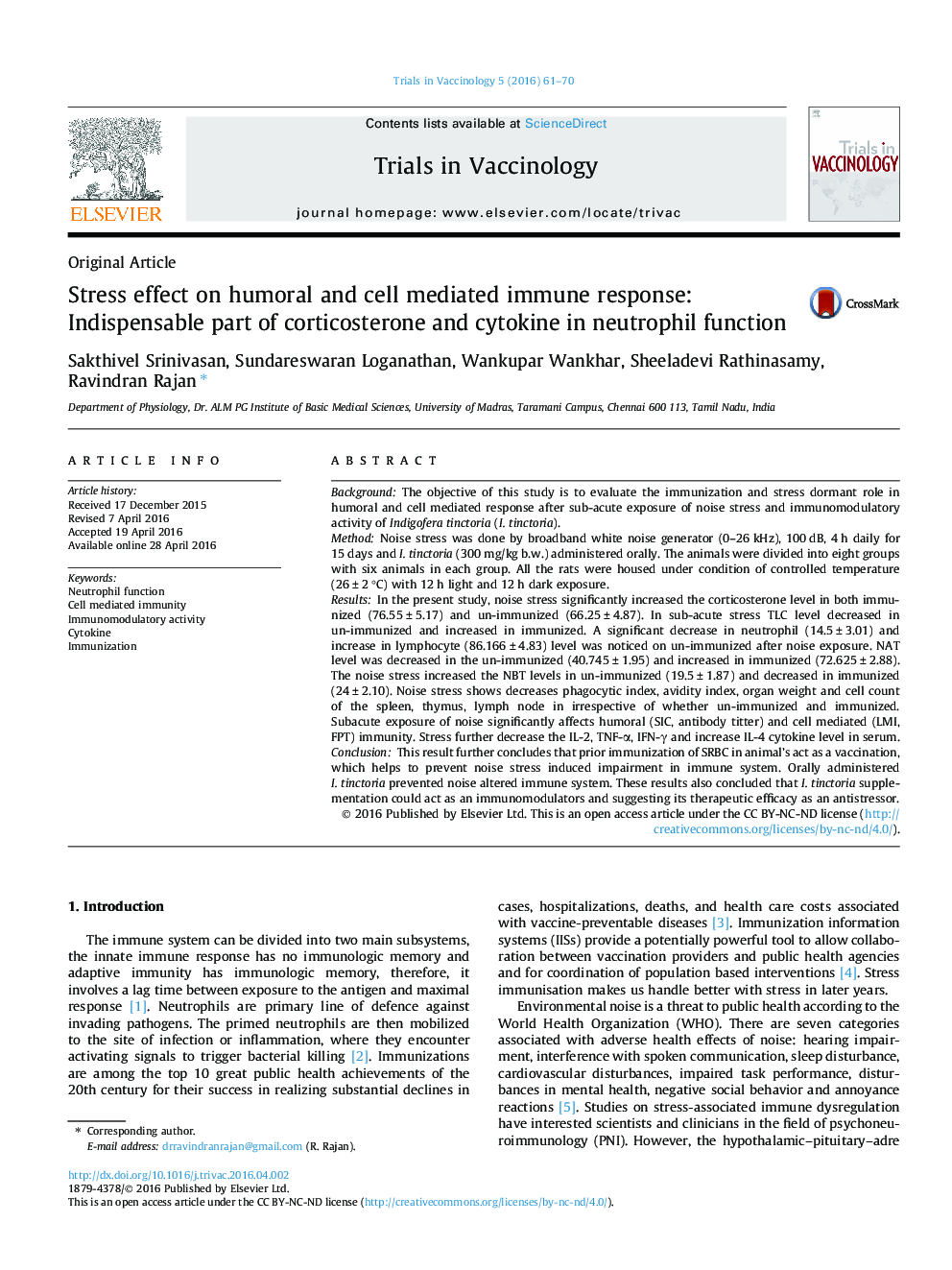| Article ID | Journal | Published Year | Pages | File Type |
|---|---|---|---|---|
| 2474340 | Trials in Vaccinology | 2016 | 10 Pages |
BackgroundThe objective of this study is to evaluate the immunization and stress dormant role in humoral and cell mediated response after sub-acute exposure of noise stress and immunomodulatory activity of Indigofera tinctoria (I. tinctoria).MethodNoise stress was done by broadband white noise generator (0–26 kHz), 100 dB, 4 h daily for 15 days and I. tinctoria (300 mg/kg b.w.) administered orally. The animals were divided into eight groups with six animals in each group. All the rats were housed under condition of controlled temperature (26 ± 2 °C) with 12 h light and 12 h dark exposure.ResultsIn the present study, noise stress significantly increased the corticosterone level in both immunized (76.55 ± 5.17) and un-immunized (66.25 ± 4.87). In sub-acute stress TLC level decreased in un-immunized and increased in immunized. A significant decrease in neutrophil (14.5 ± 3.01) and increase in lymphocyte (86.166 ± 4.83) level was noticed on un-immunized after noise exposure. NAT level was decreased in the un-immunized (40.745 ± 1.95) and increased in immunized (72.625 ± 2.88). The noise stress increased the NBT levels in un-immunized (19.5 ± 1.87) and decreased in immunized (24 ± 2.10). Noise stress shows decreases phagocytic index, avidity index, organ weight and cell count of the spleen, thymus, lymph node in irrespective of whether un-immunized and immunized. Subacute exposure of noise significantly affects humoral (SIC, antibody titter) and cell mediated (LMI, FPT) immunity. Stress further decrease the IL-2, TNF-α, IFN-γ and increase IL-4 cytokine level in serum.ConclusionThis result further concludes that prior immunization of SRBC in animal’s act as a vaccination, which helps to prevent noise stress induced impairment in immune system. Orally administered I. tinctoria prevented noise altered immune system. These results also concluded that I. tinctoria supplementation could act as an immunomodulators and suggesting its therapeutic efficacy as an antistressor.
